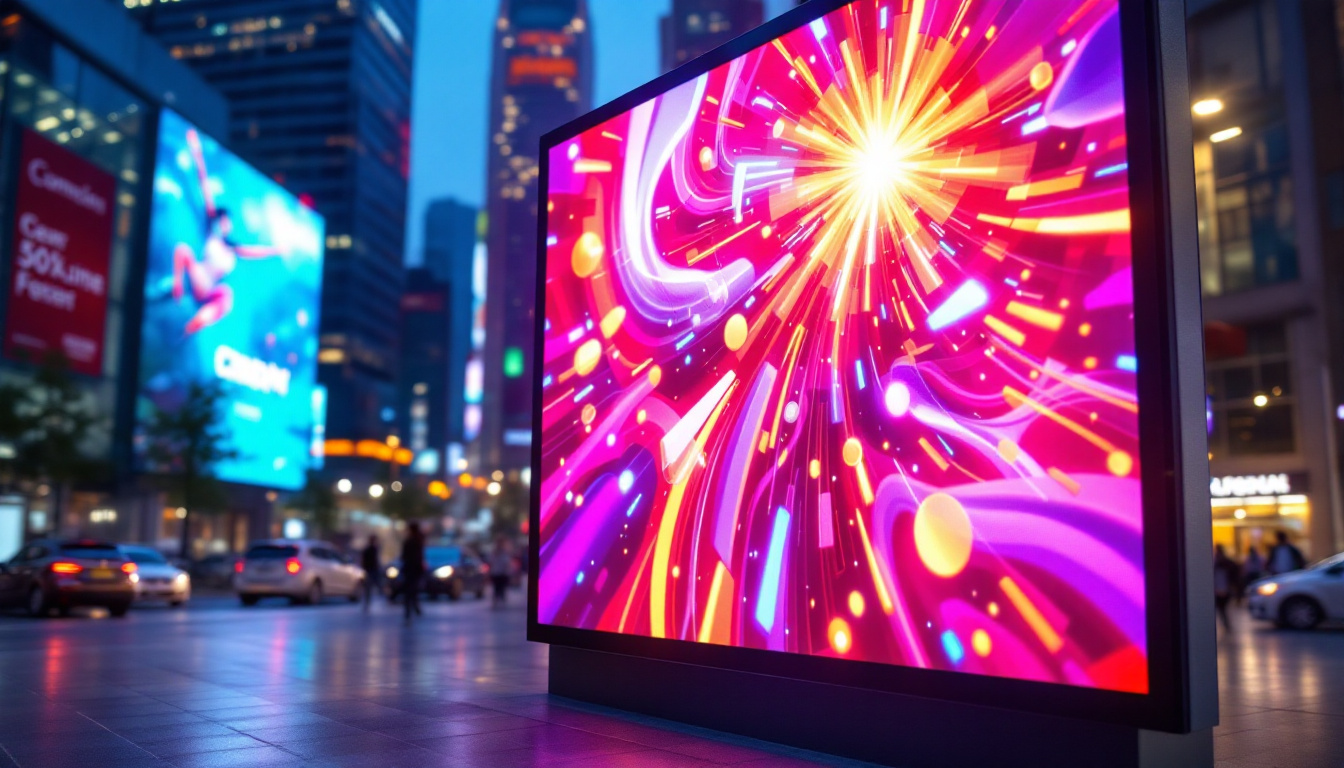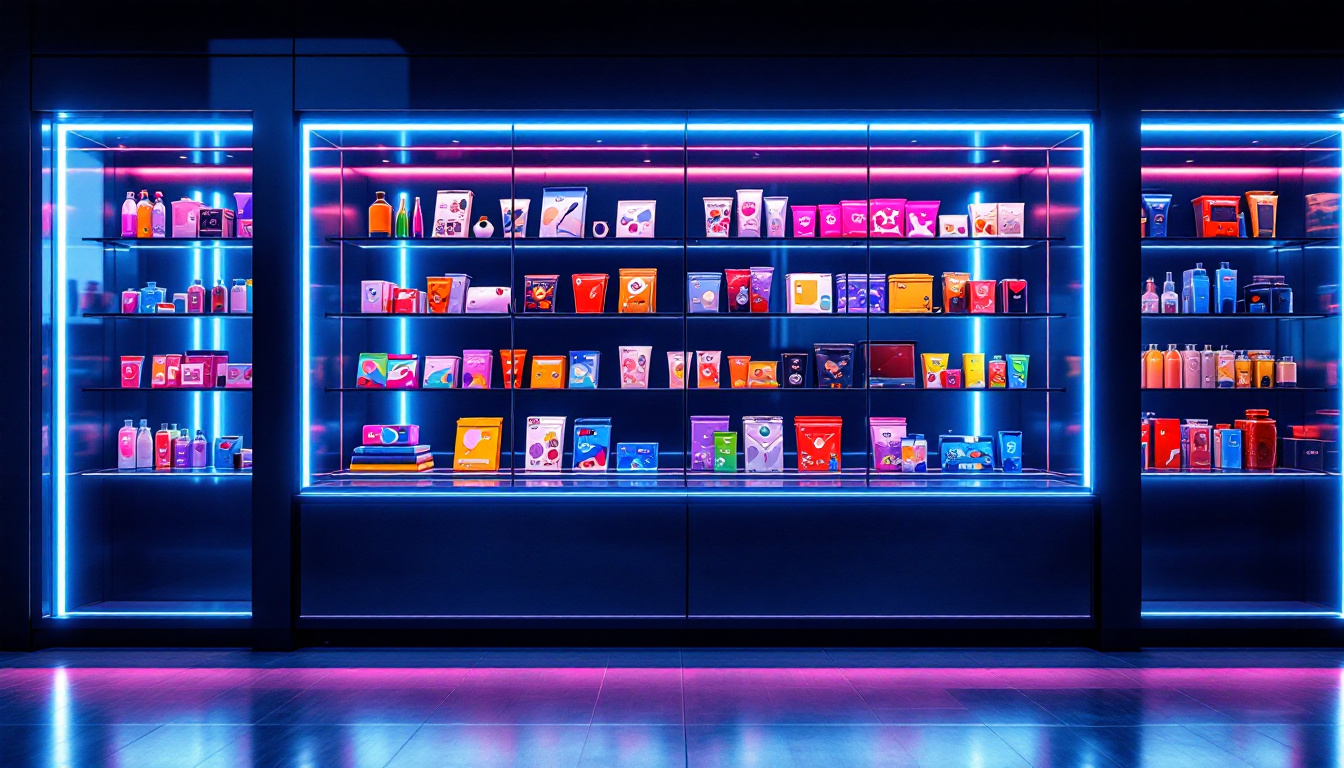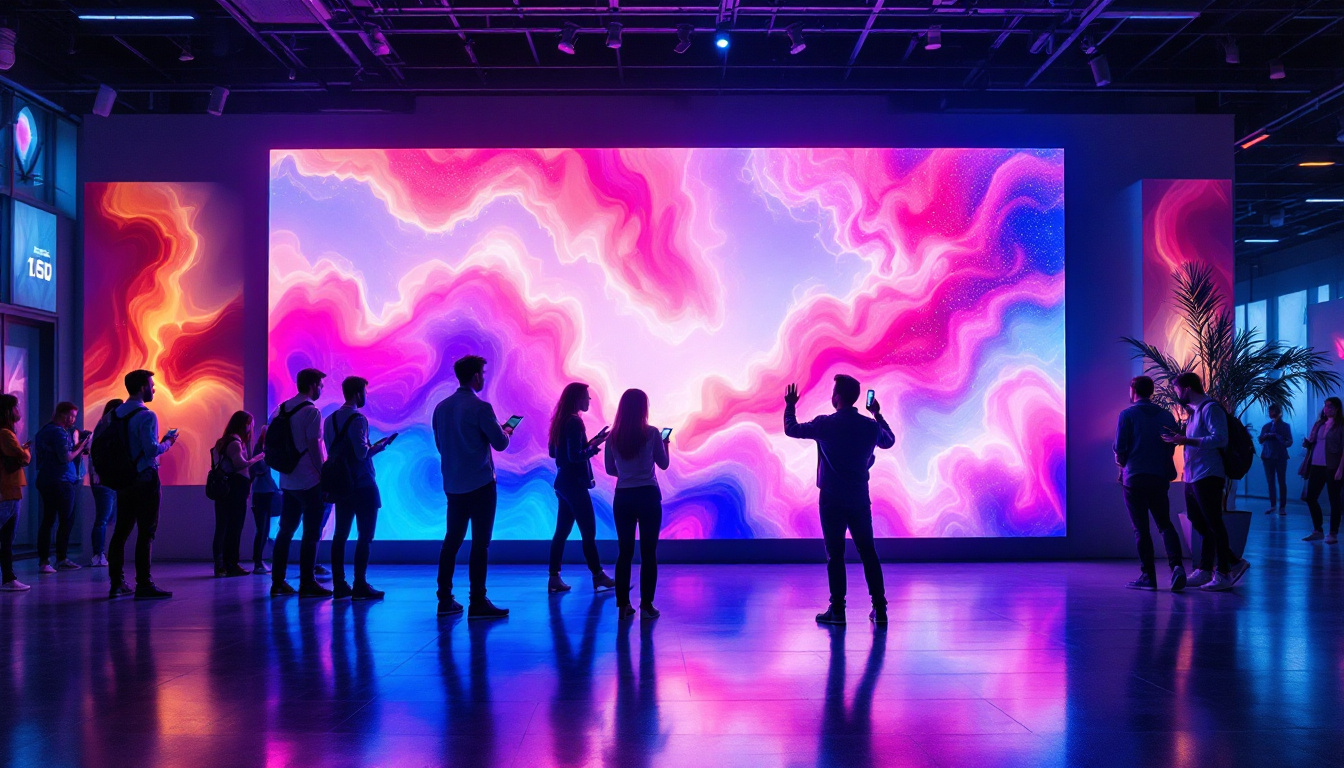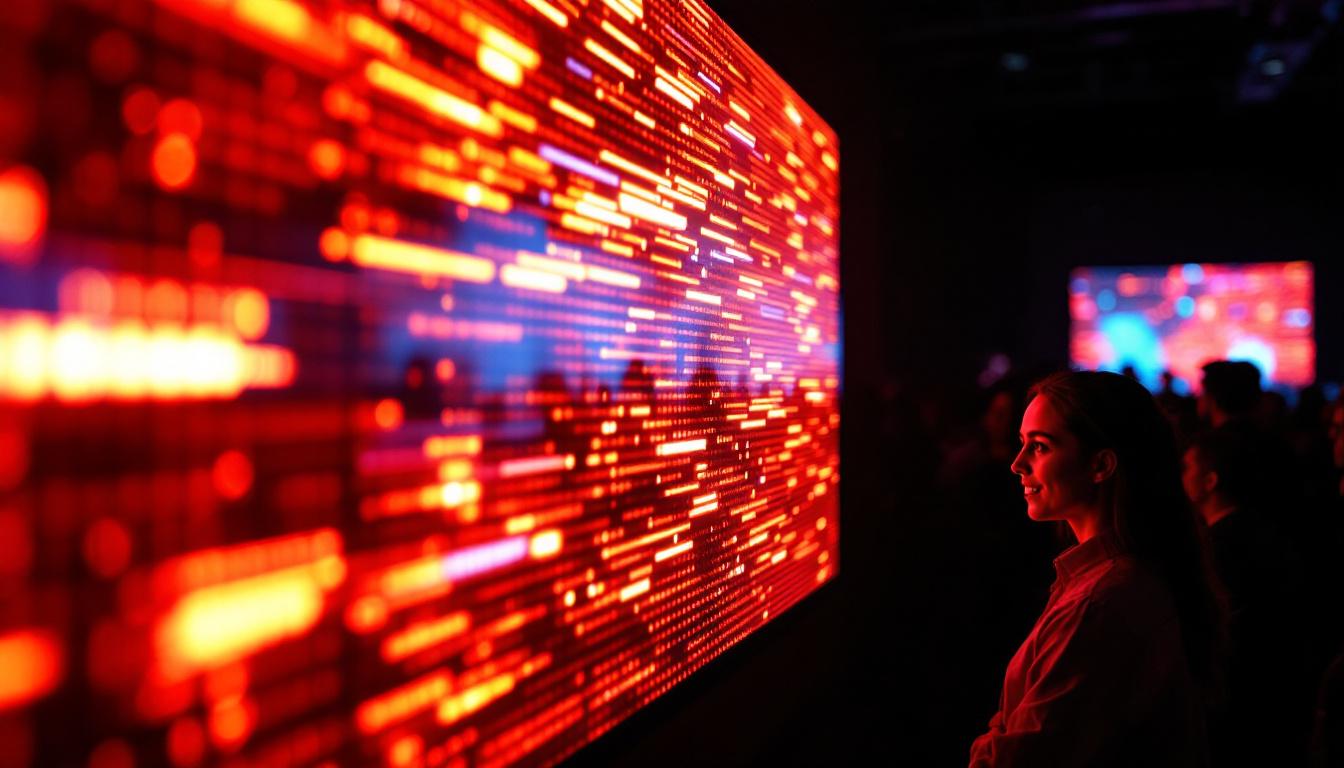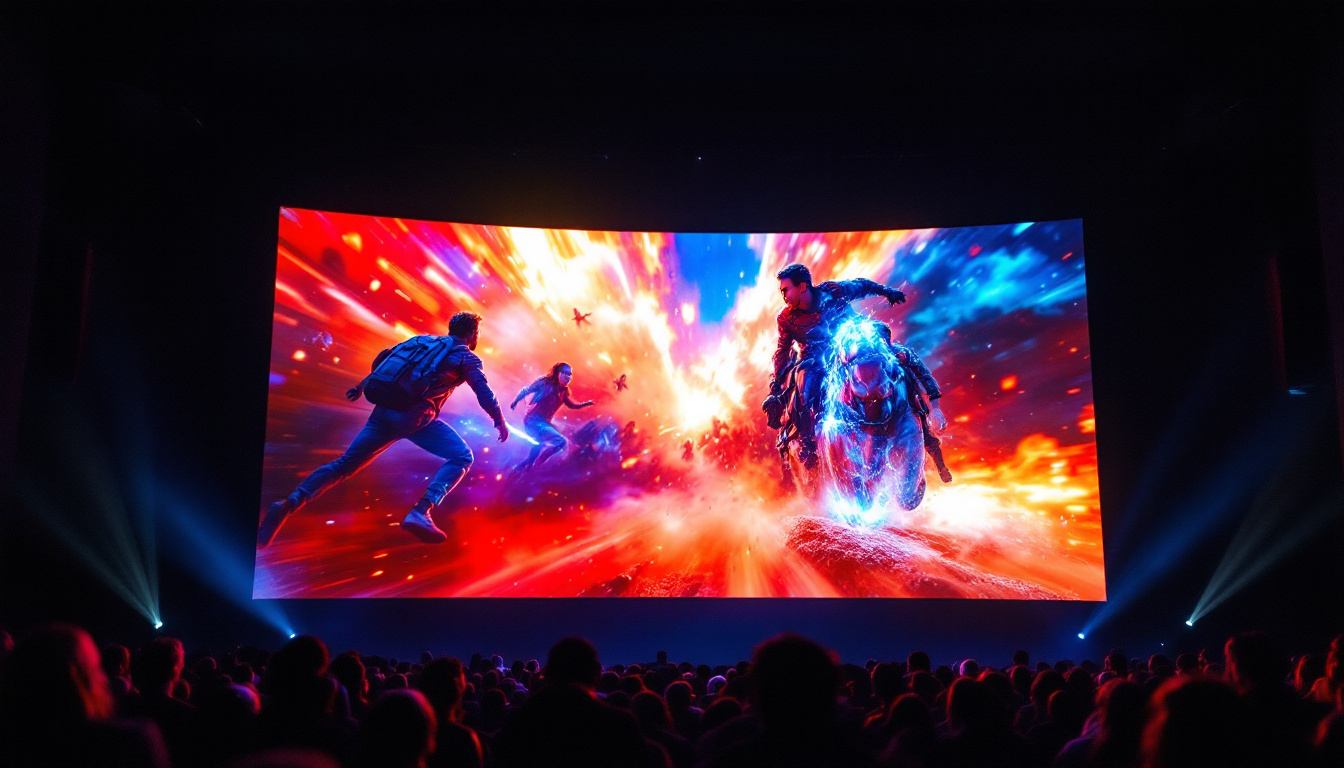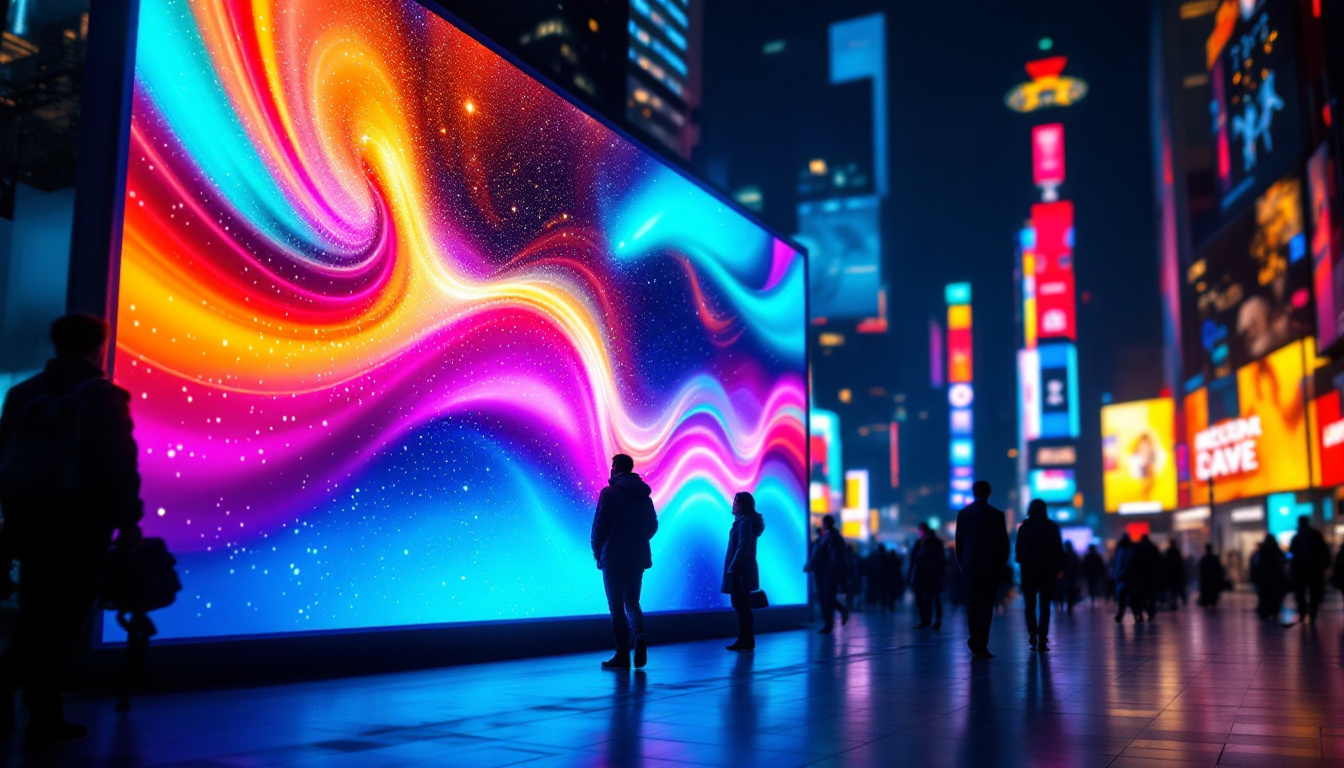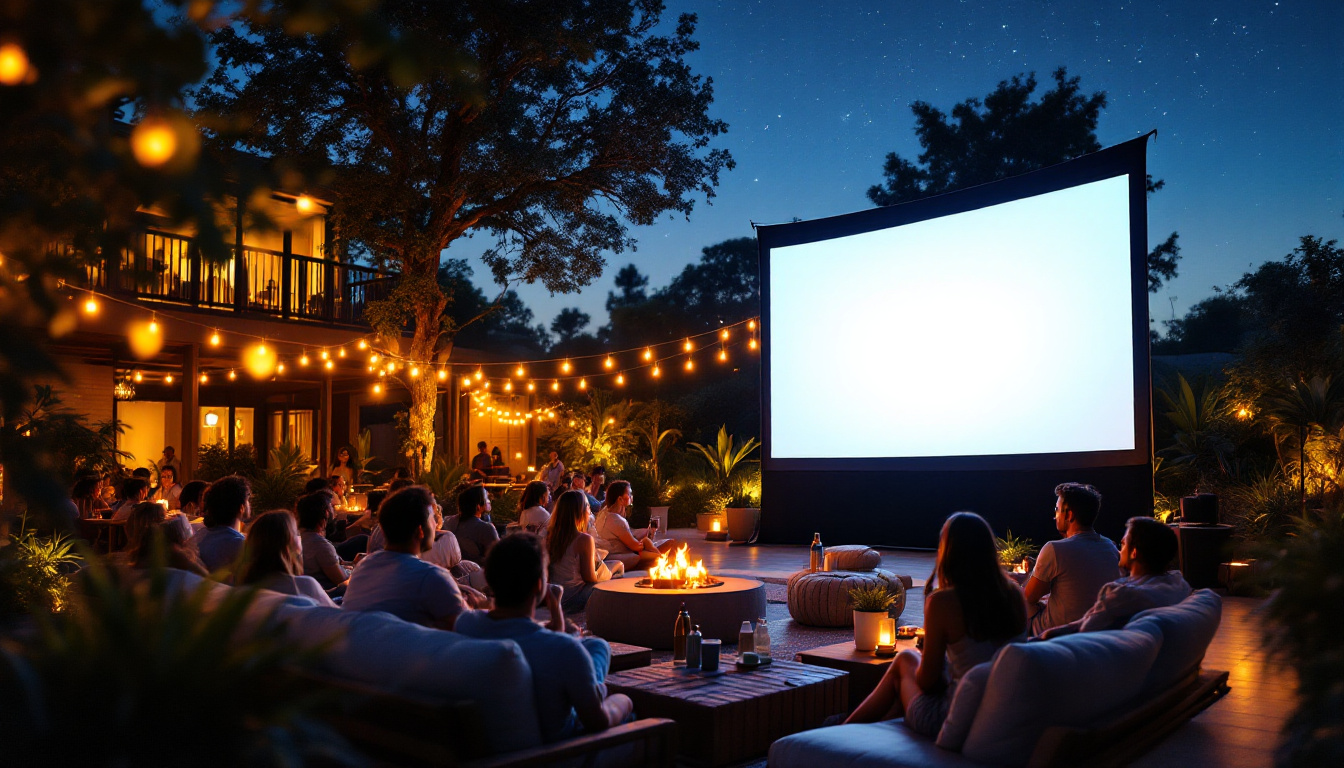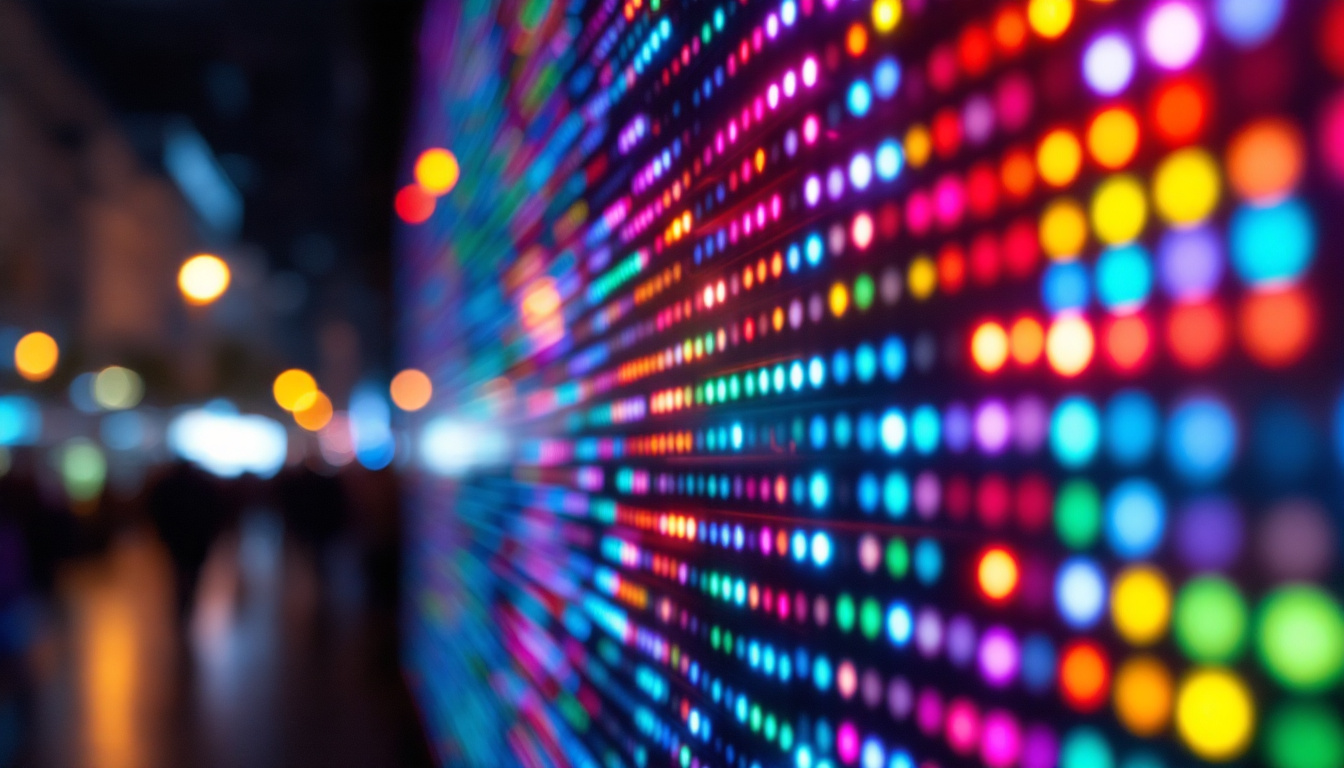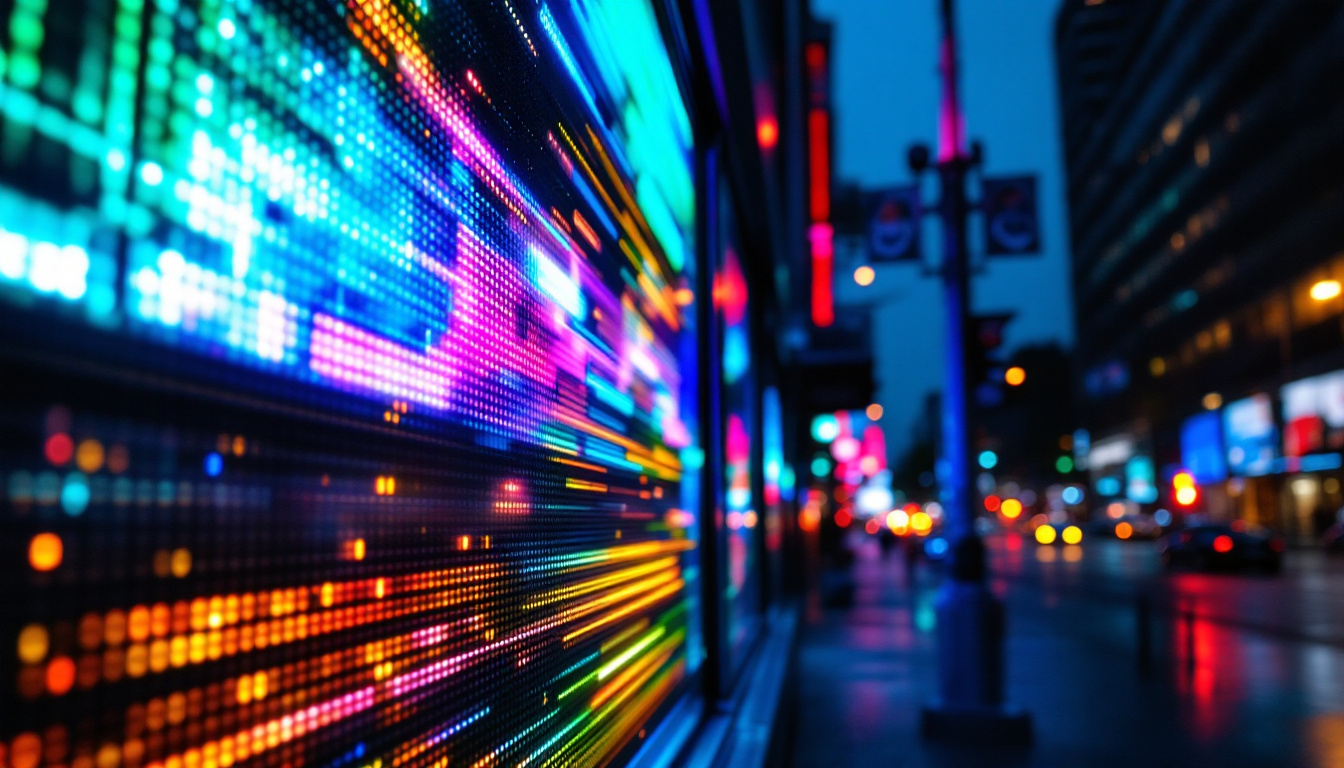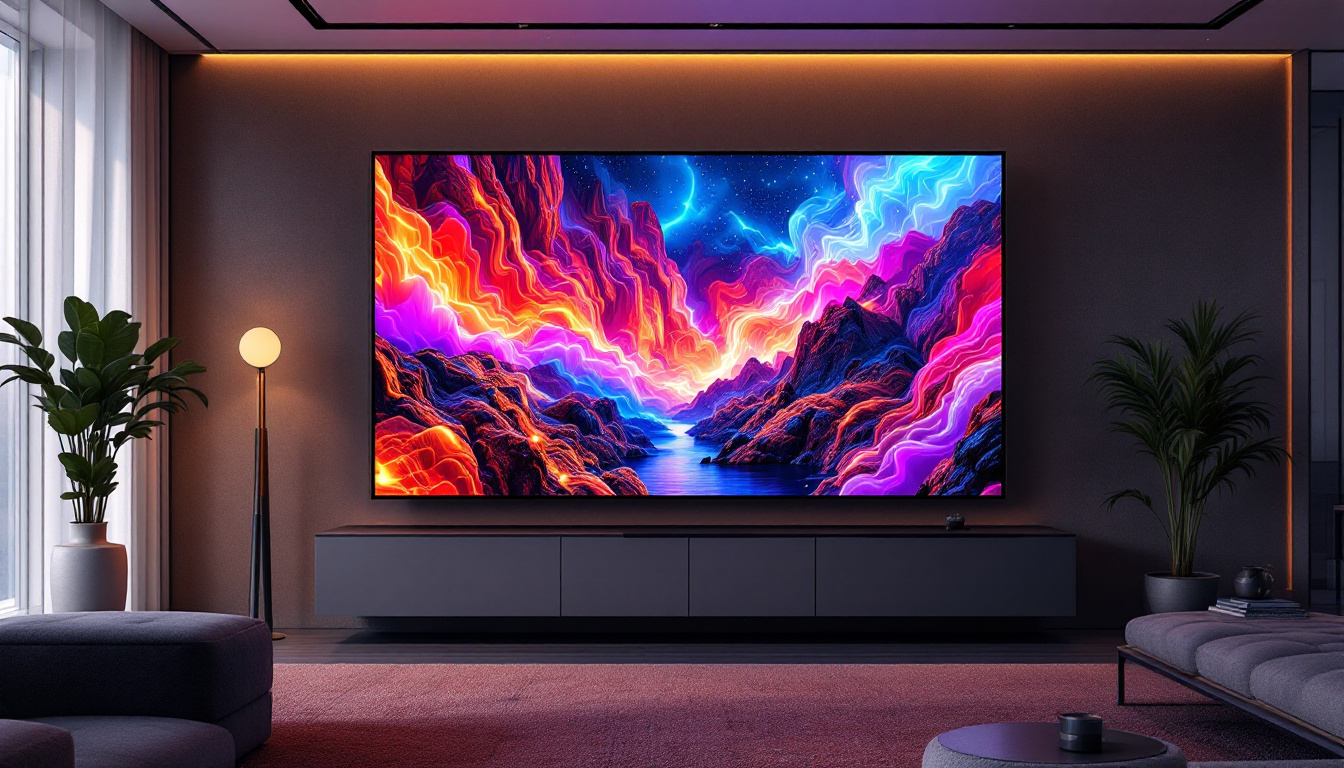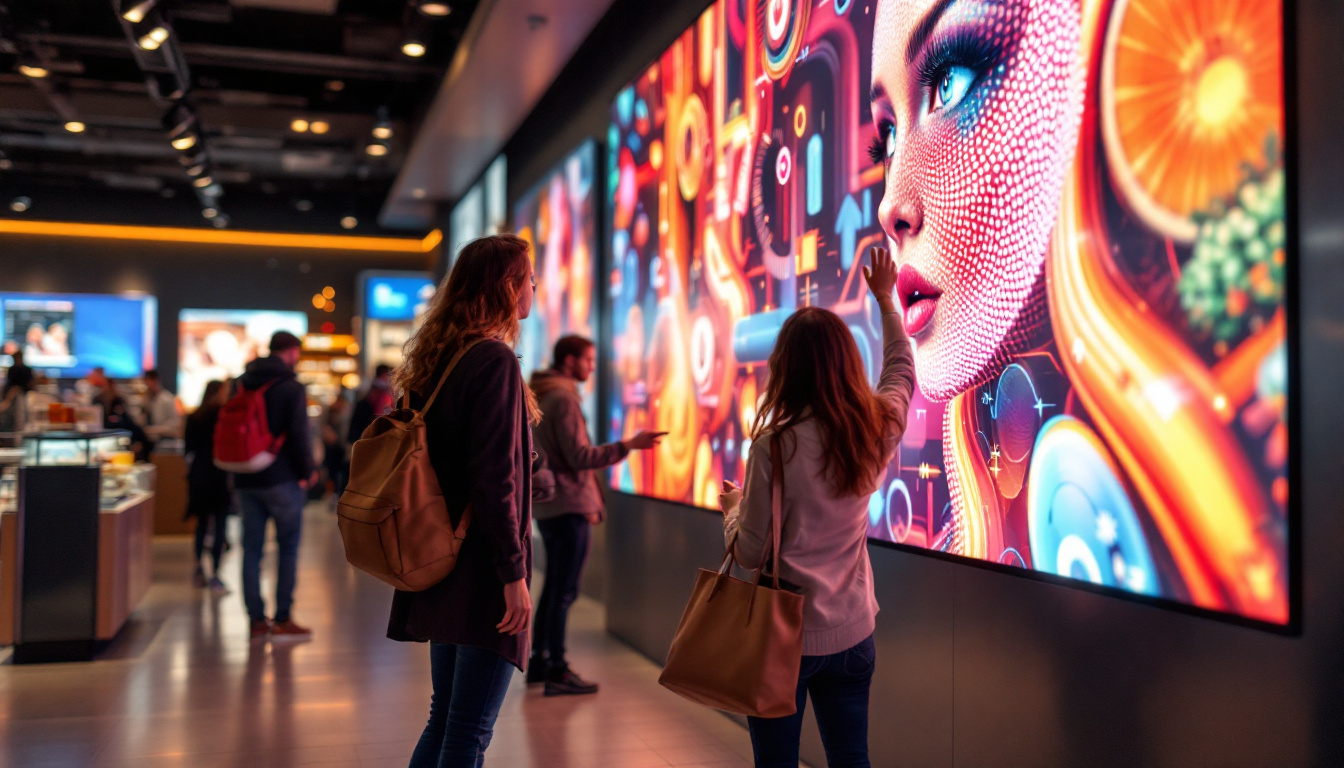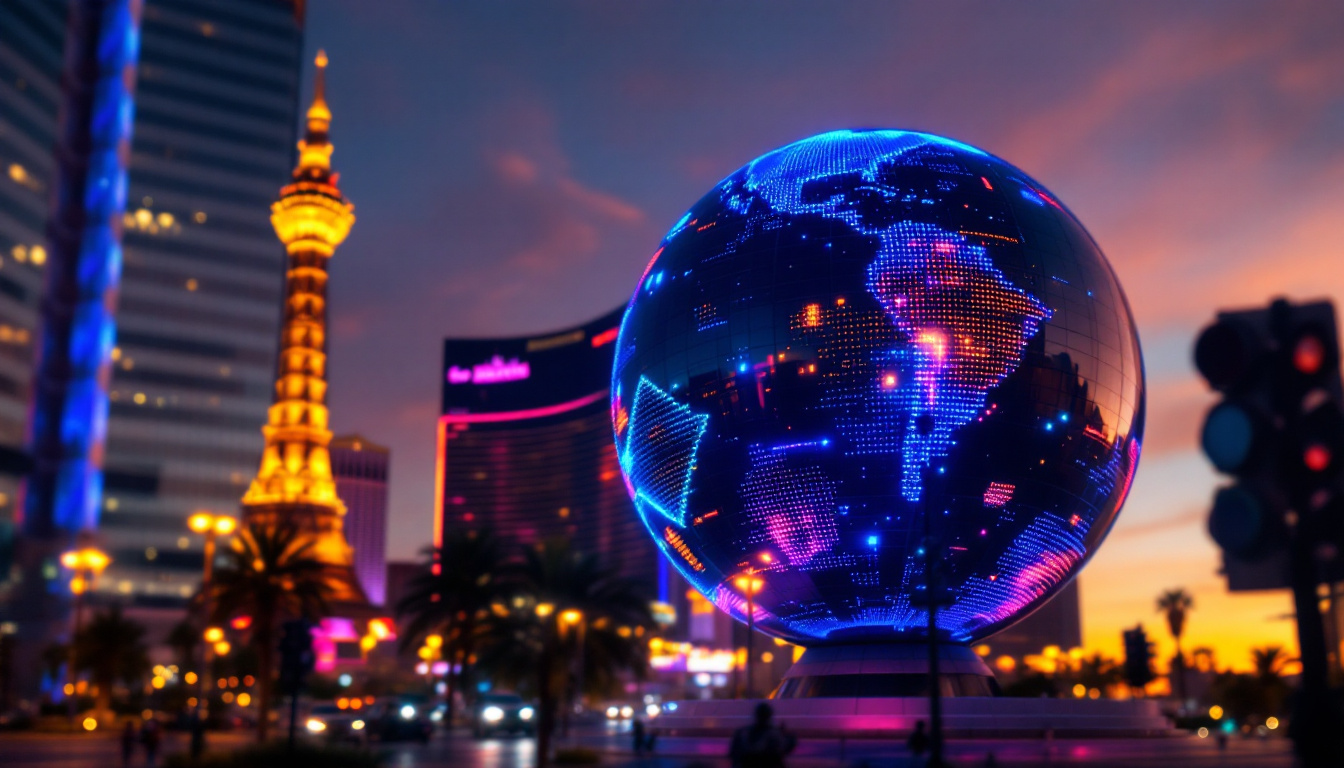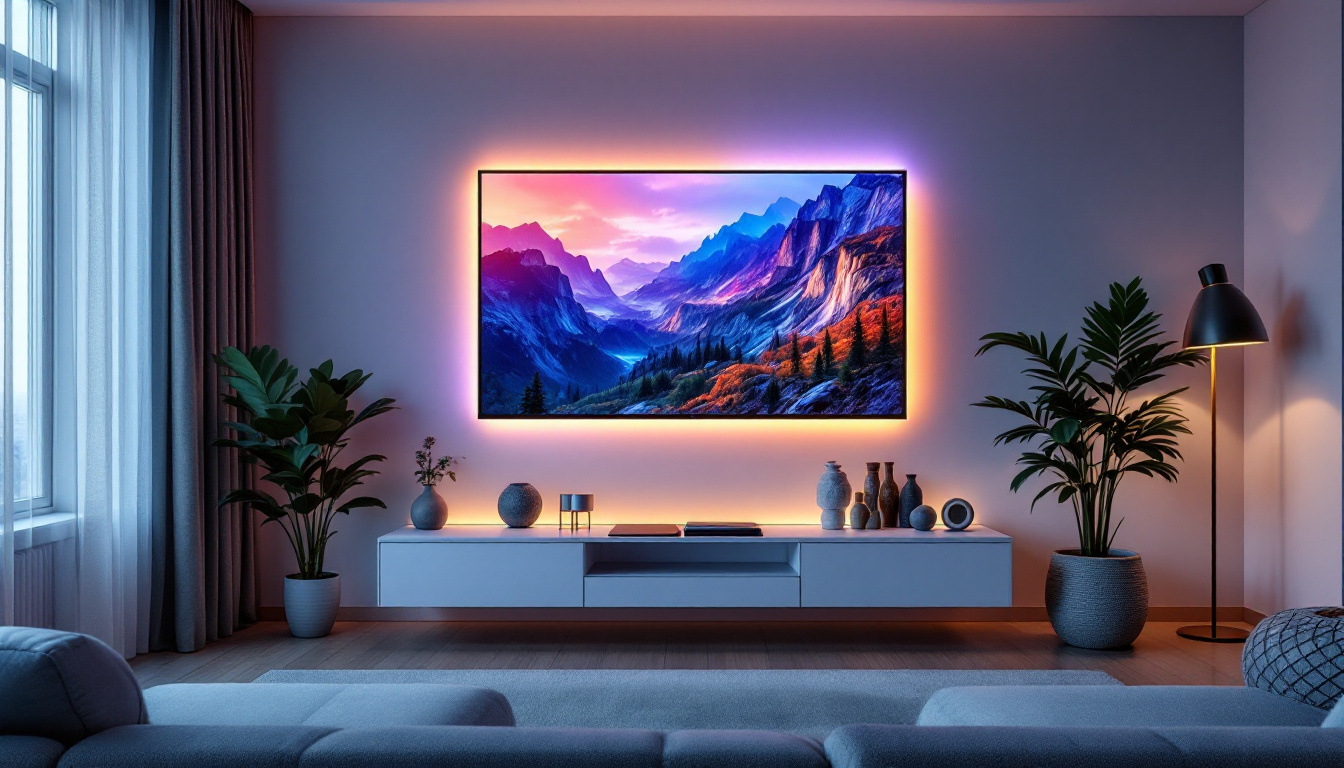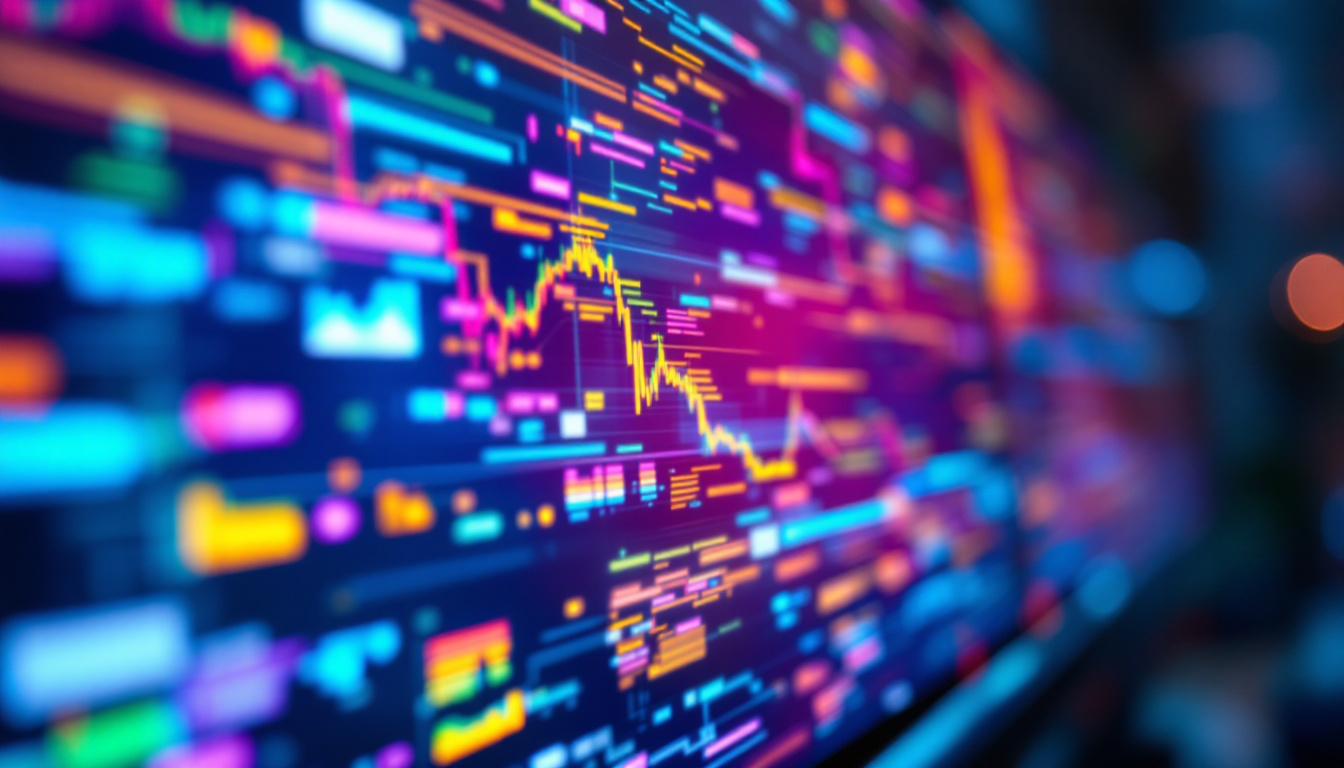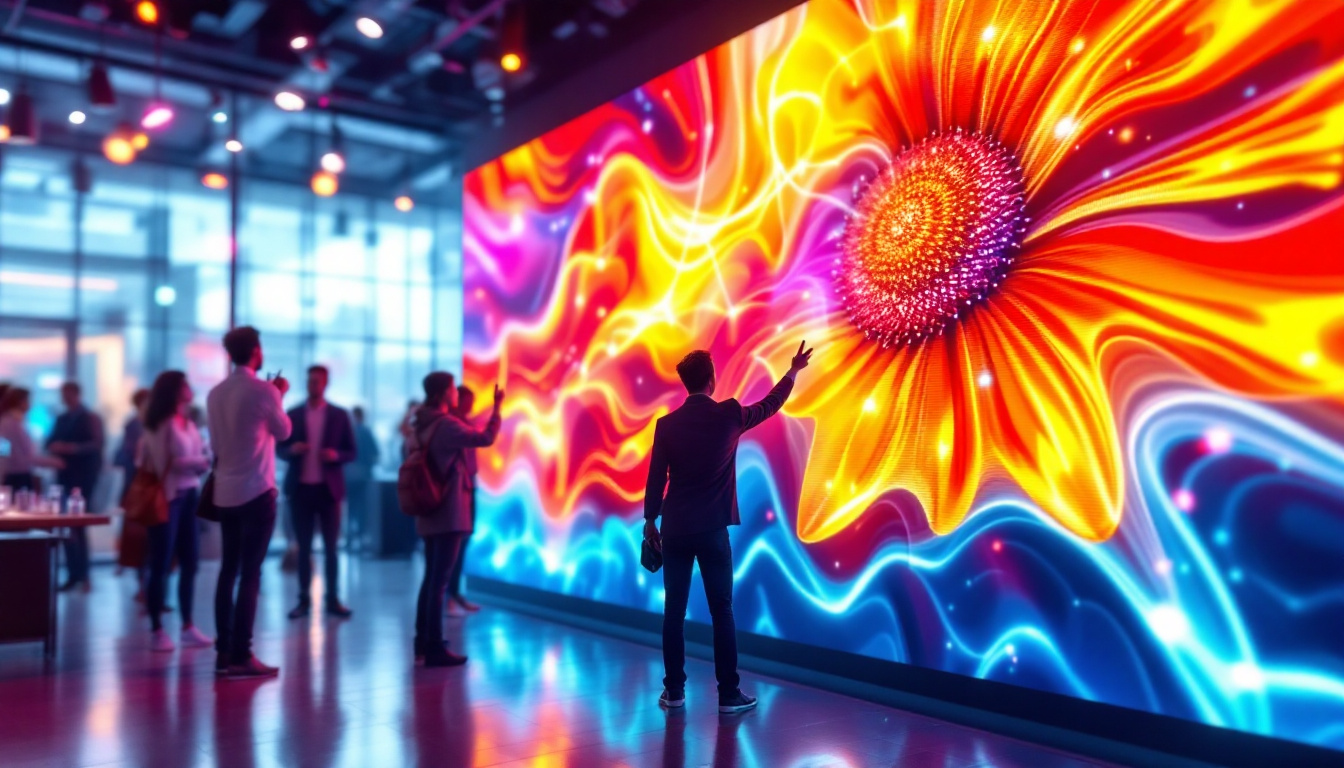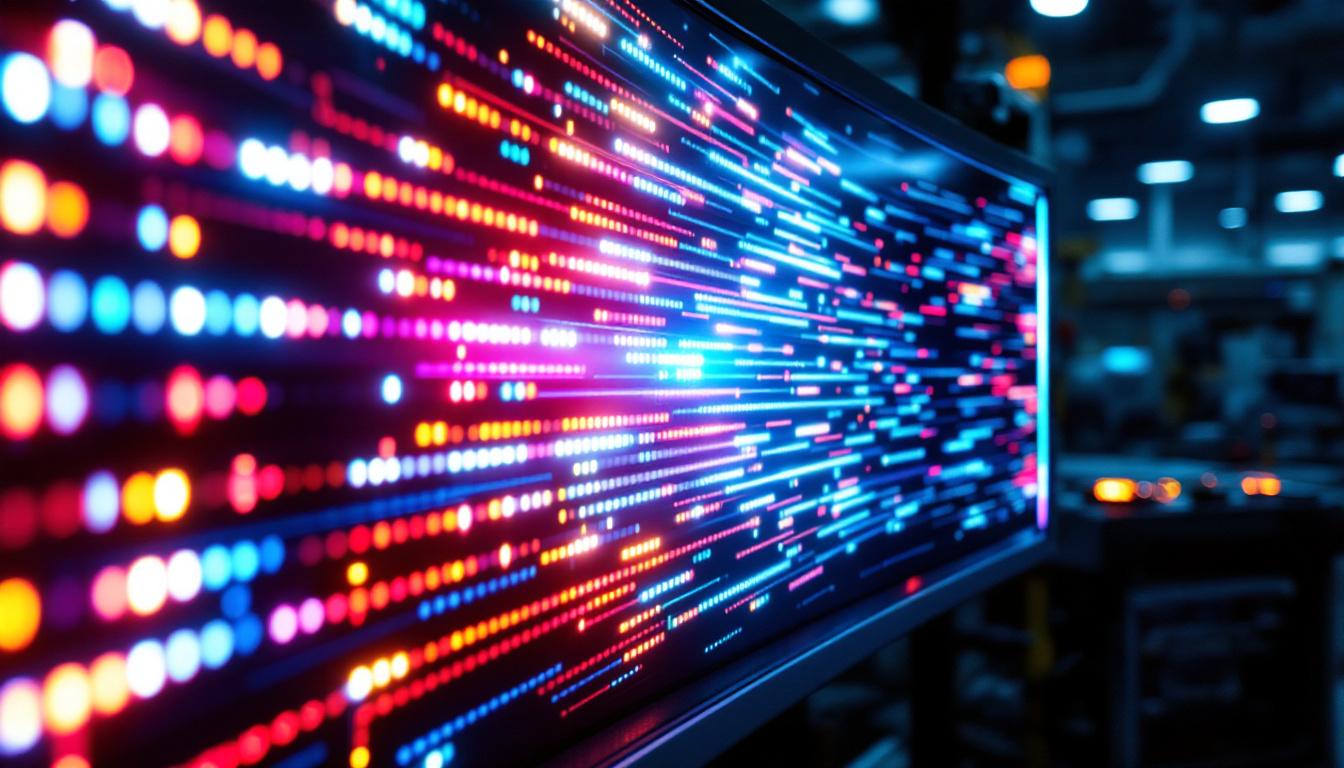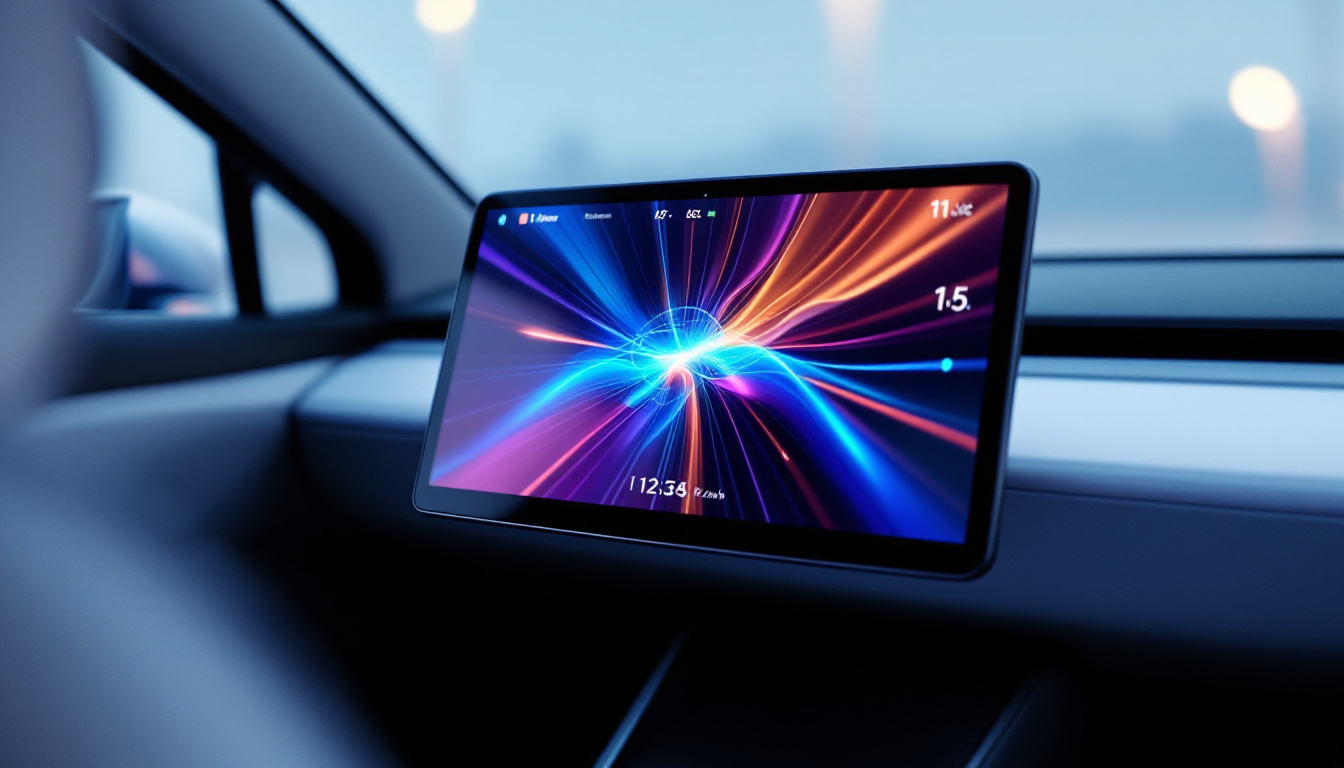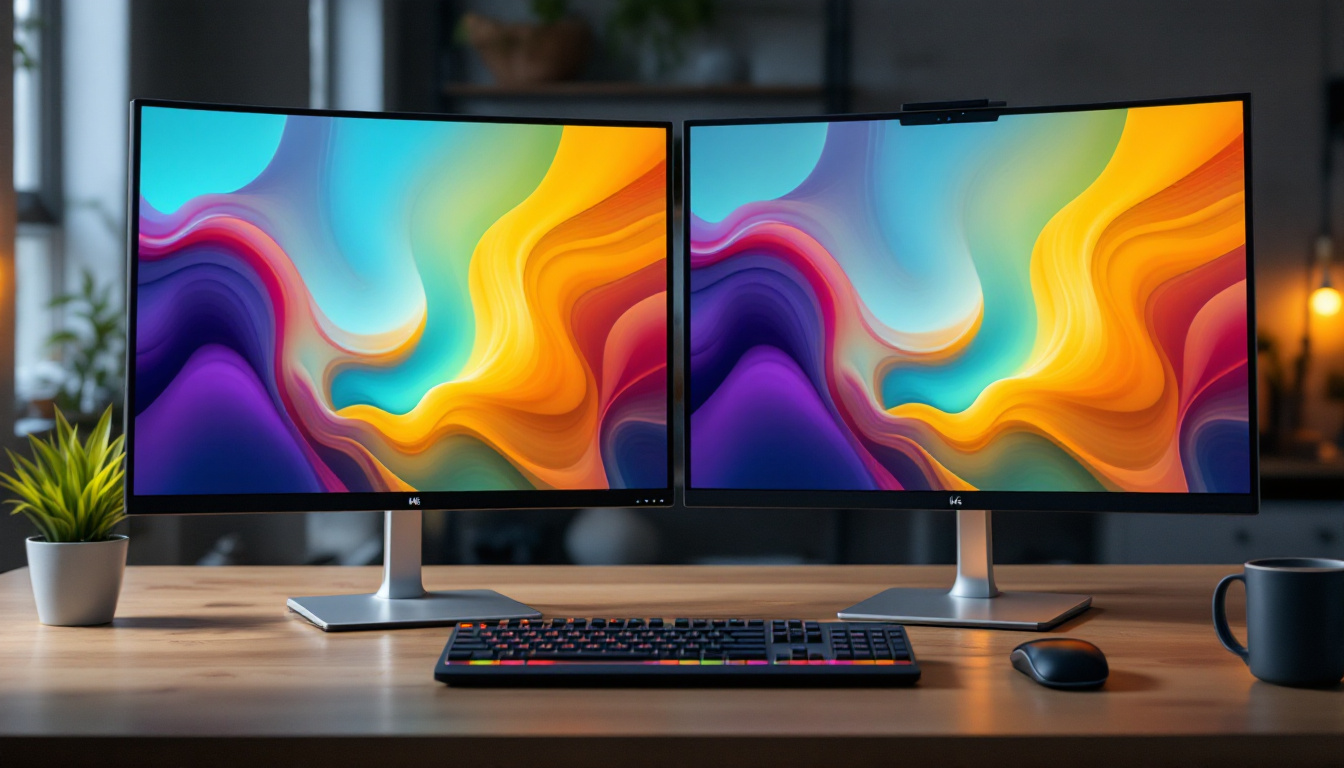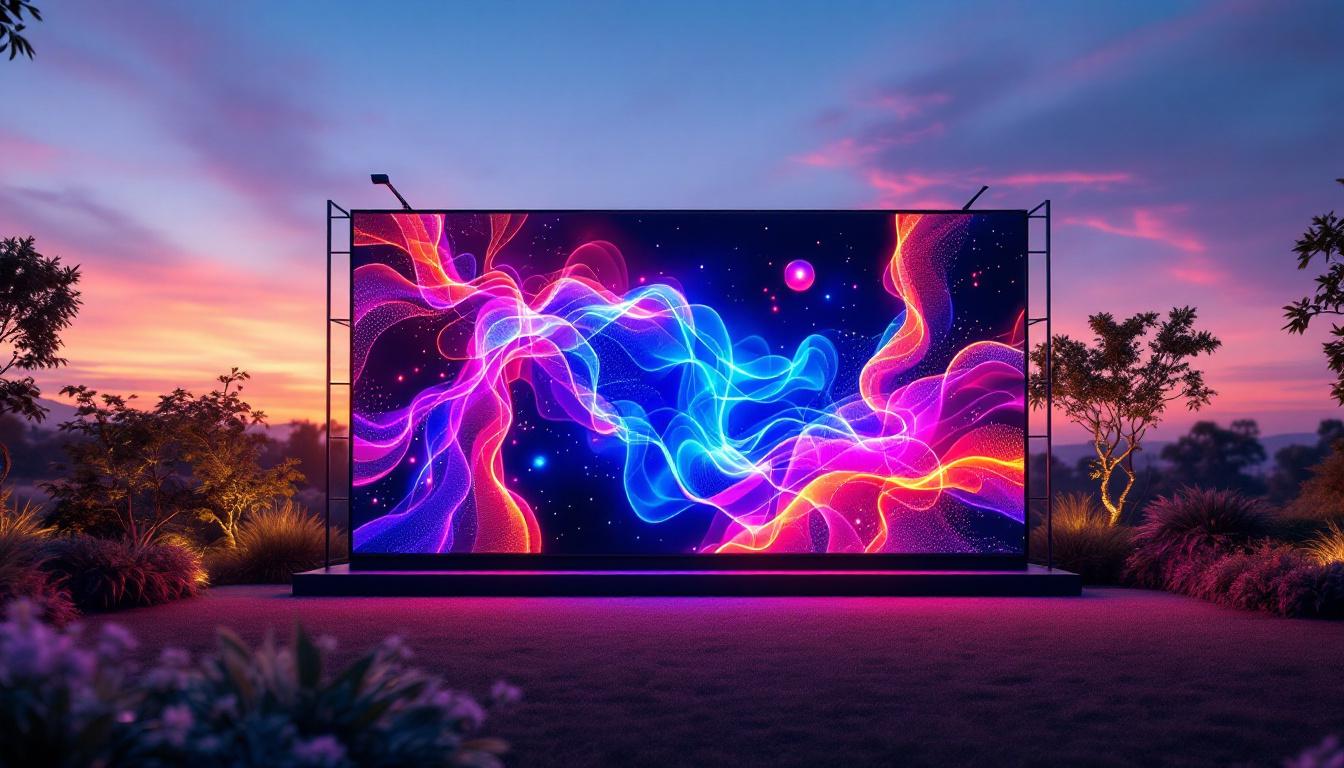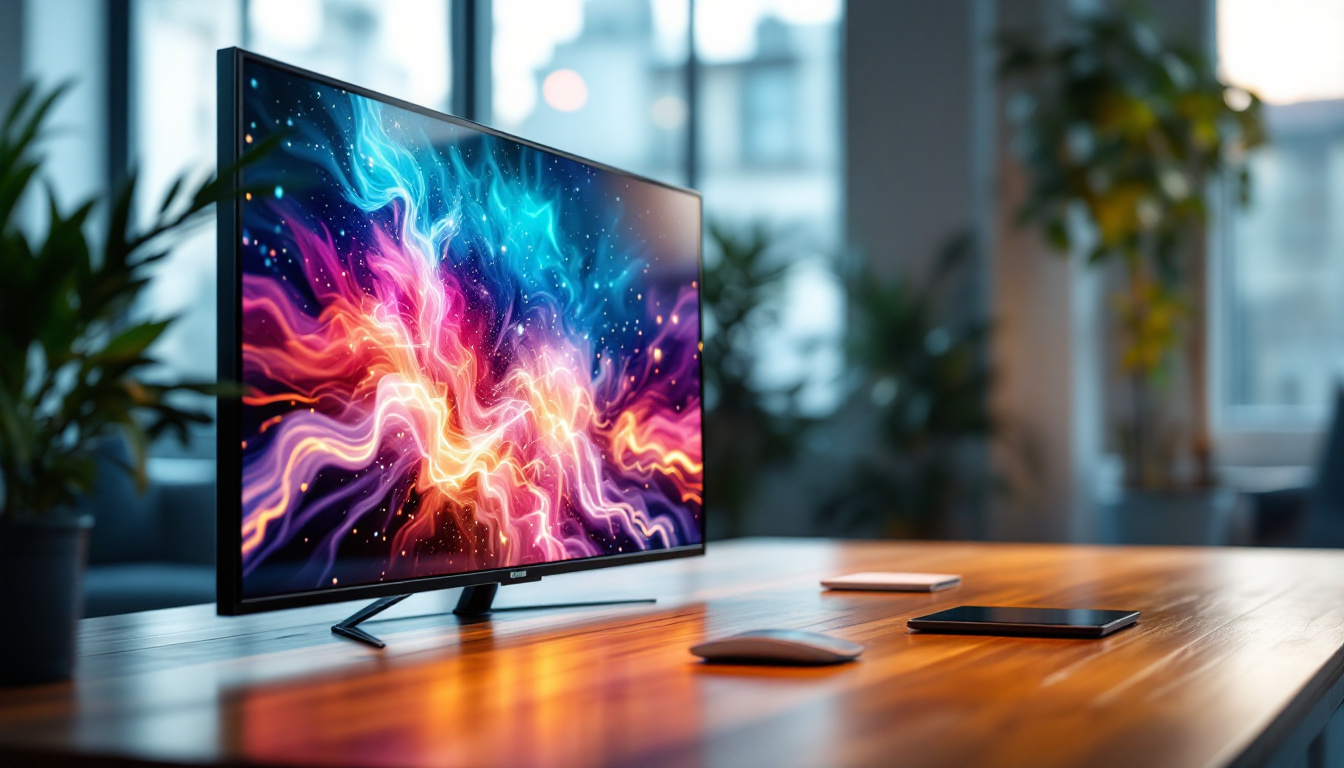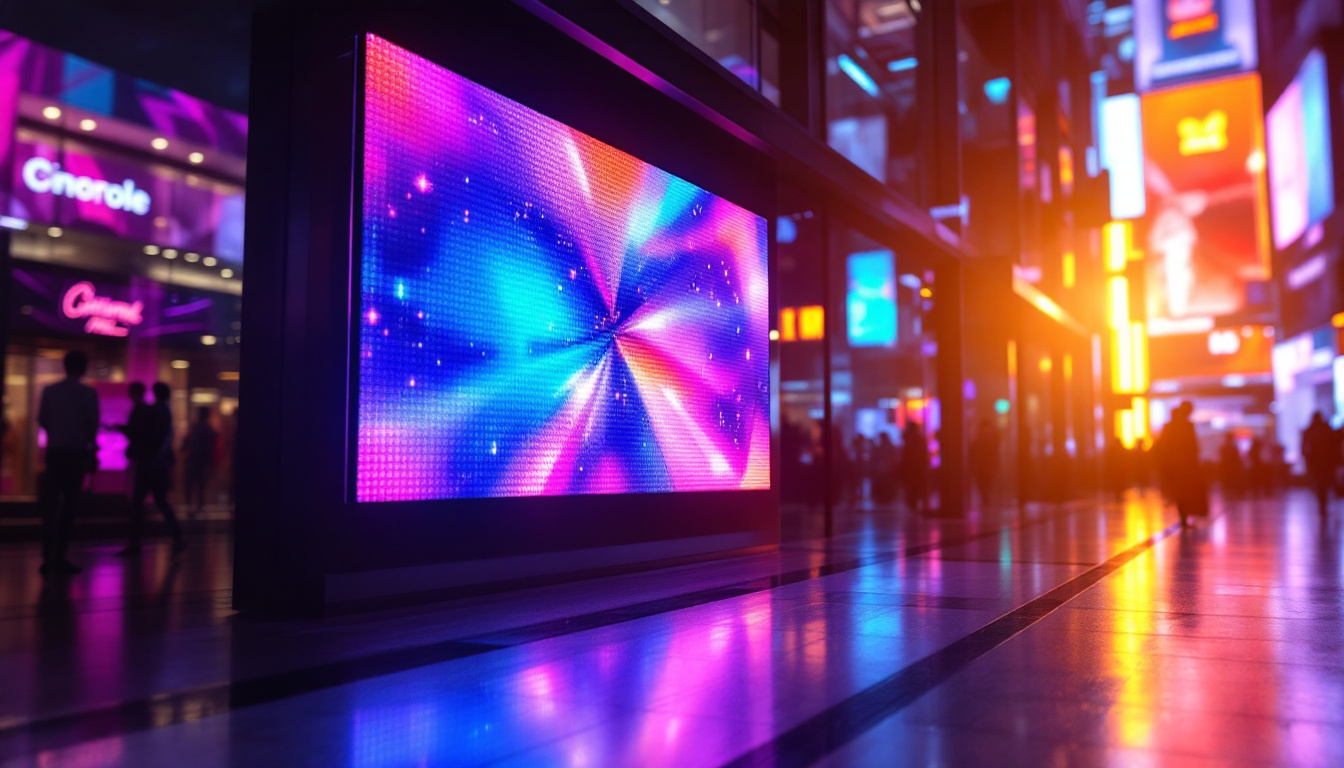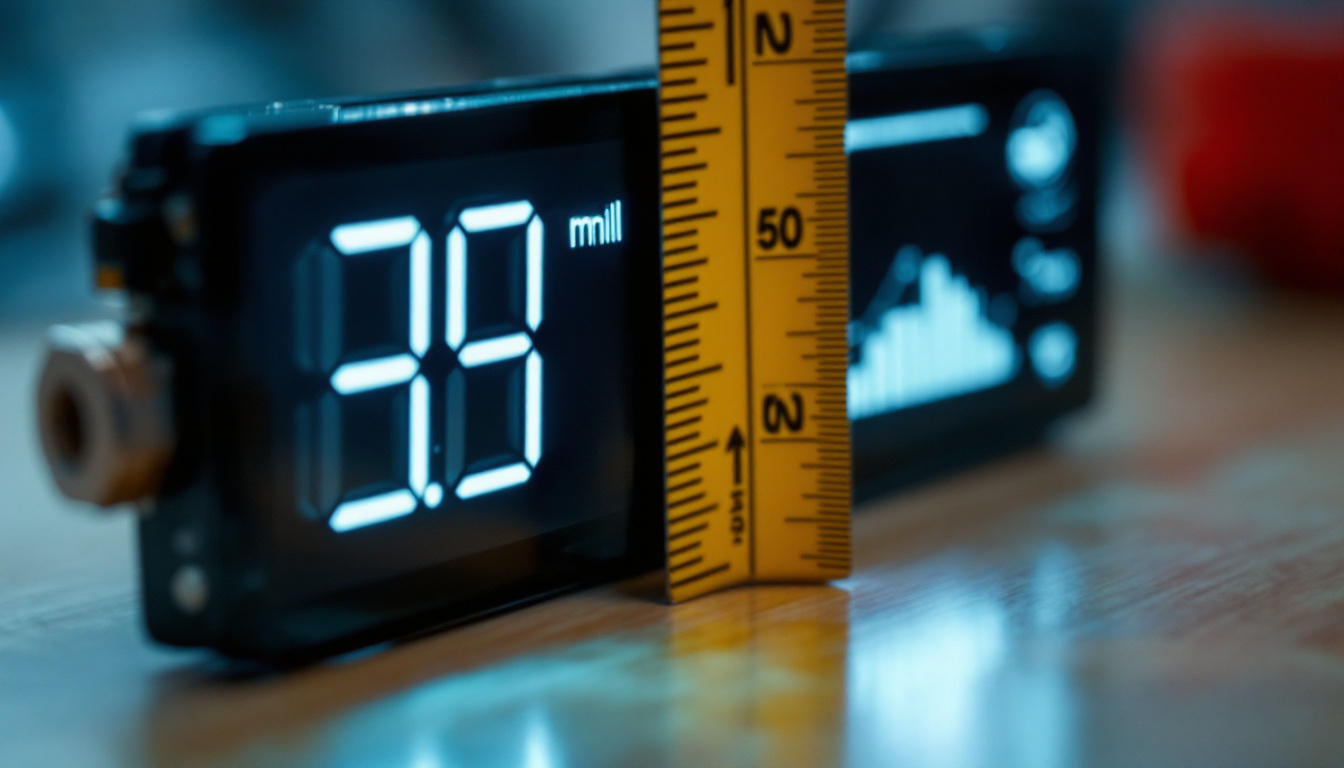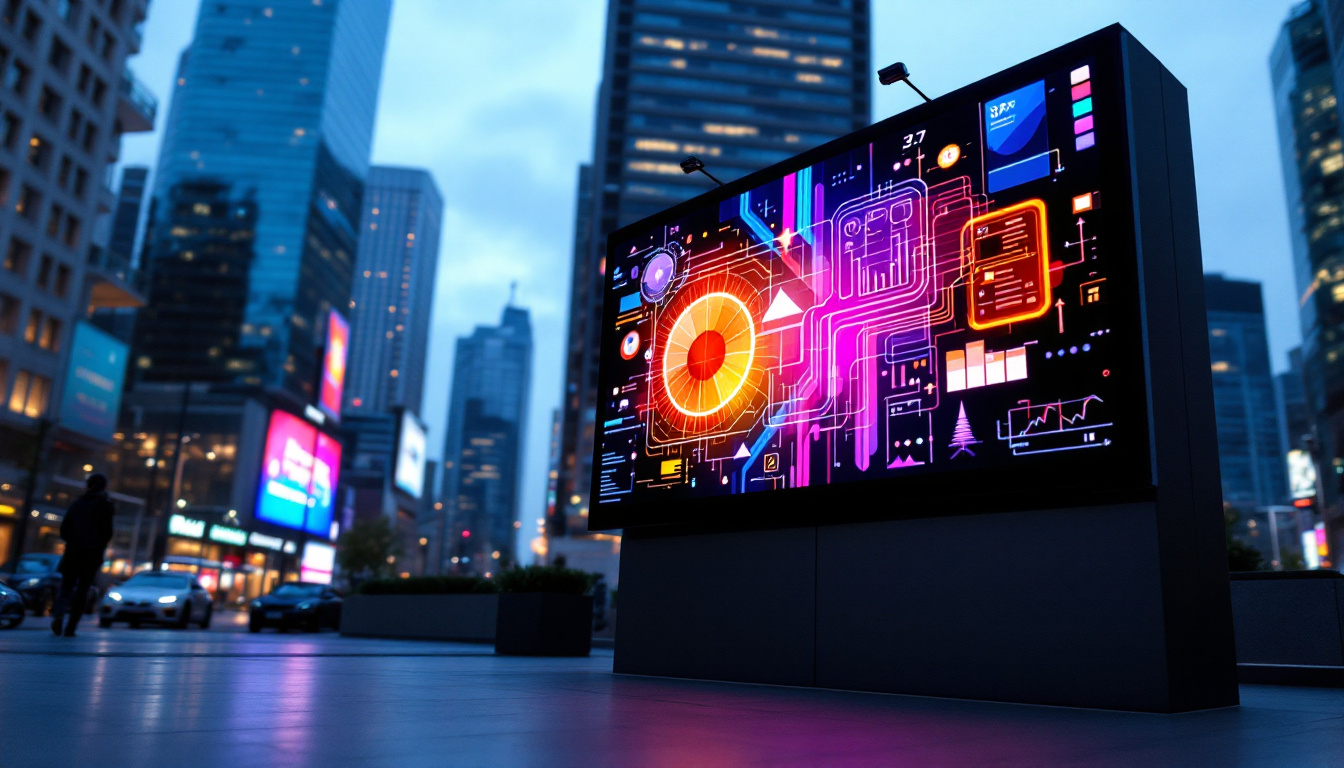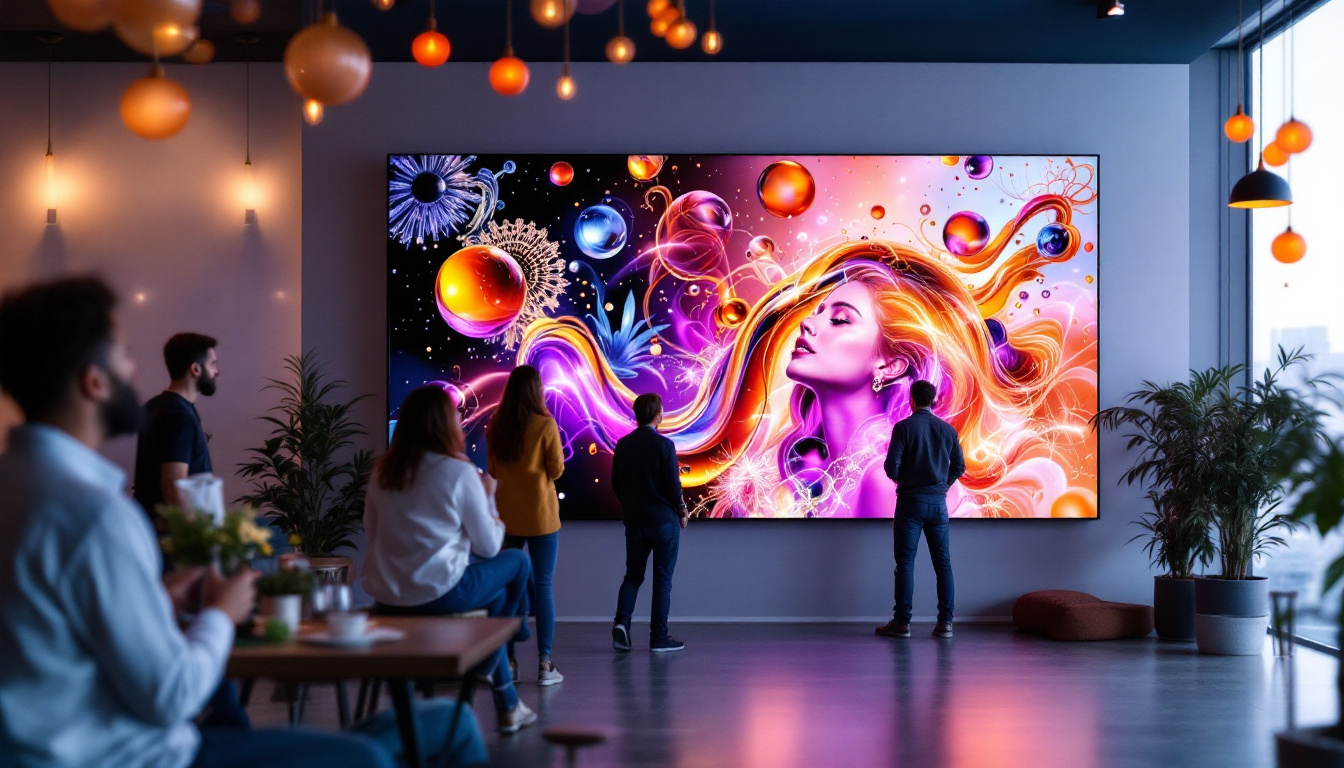In the modern world of advertising, led advertising screens have emerged as a powerful medium for brands to connect with their audiences. These displays, characterized by their bright and vibrant visuals, have transformed the landscape of outdoor and indoor advertising. This article delves into the intricacies of LED displays, exploring their technology, applications, and advantages.
Understanding LED Technology
LED, or Light Emitting Diode, technology is at the heart of these advertising screens. Unlike traditional display technologies, LEDs produce light through electroluminescence, which is the phenomenon of light emission when an electric current passes through a semiconductor material. This process not only makes LEDs energy-efficient but also allows for a longer lifespan compared to conventional lighting solutions, which is a significant advantage in the fast-paced world of advertising.
How LED Displays Work
LED displays consist of numerous tiny diodes that emit light in various colors. These diodes are arranged in a matrix format to create images and videos. The color and brightness of each pixel can be controlled independently, allowing for dynamic and vivid displays. The combination of red, green, and blue (RGB) LEDs produces a full spectrum of colors, enabling stunning visuals that capture attention. This versatility in color production is crucial for brands looking to convey their message effectively and attractively.
The technology behind LED displays has evolved significantly over the years. Modern LED screens can achieve high resolutions, making them suitable for both close-up viewing and large-scale installations. This adaptability is one reason why they have become a favored choice for advertisers. Furthermore, advancements in LED technology have led to the development of features such as high dynamic range (HDR) and improved refresh rates, which enhance the viewing experience by providing richer colors and smoother motion. As a result, LED displays are not only used for advertising but also for entertainment, events, and even art installations, showcasing their versatility across various sectors.
Types of LED Displays
There are several types of LED displays, each catering to different needs and environments. The most common types include:
- Indoor LED Displays: These are designed for use in controlled environments, such as shopping malls, conference centers, and theaters. They typically have a higher pixel density, providing sharper images for close viewing. Indoor displays are often used for presentations, digital signage, and interactive kiosks, enhancing the overall experience for visitors.
- Outdoor LED Displays: Built to withstand various weather conditions, outdoor displays are larger and often feature lower pixel density. They are ideal for billboards, stadiums, and public transportation stations. With advancements in technology, many outdoor displays now come equipped with features like anti-glare coatings and enhanced brightness levels to ensure visibility even in direct sunlight.
- Transparent LED Displays: These innovative screens allow for visibility through the display itself, making them perfect for storefronts and exhibitions. They provide a unique way to blend advertising with the surrounding environment. This type of display not only serves as a medium for advertisements but also maintains the aesthetic appeal of the space, allowing natural light to filter through while still delivering engaging content.
Applications of LED Advertising Screens
The versatility of LED advertising screens makes them suitable for a wide range of applications. From retail to entertainment, these displays are revolutionizing how brands communicate with their audiences.
Retail Advertising
In retail environments, LED displays serve as powerful tools for attracting customers. They can showcase promotions, new products, and engaging content that enhances the shopping experience. Retailers can easily update their messaging in real-time, allowing for timely promotions that resonate with consumers.
Moreover, the vibrant colors and dynamic content of LED displays can create an immersive atmosphere that draws shoppers into stores. This not only increases foot traffic but also encourages longer dwell times, ultimately boosting sales.
Event Marketing
LED screens play a pivotal role in event marketing, whether for concerts, sports events, or corporate gatherings. They provide large, eye-catching visuals that can be seen from great distances, ensuring that attendees are engaged and informed.
During live events, LED displays can be used to relay information such as schedules, sponsor messages, and social media feeds. This interactivity enhances the overall experience for attendees and creates a sense of community among participants.
Public Information and Wayfinding
Beyond advertising, LED displays are increasingly used for public information and wayfinding. Airports, train stations, and public transportation hubs utilize these screens to provide real-time updates on schedules, delays, and directions.
The clarity and visibility of LED displays make them ideal for conveying important information quickly and efficiently. This is particularly crucial in high-traffic areas where people need to make decisions rapidly.
Advantages of LED Advertising Screens
LED advertising screens offer numerous advantages over traditional advertising methods. Their unique characteristics make them an attractive option for businesses looking to maximize their advertising impact.
High Visibility and Brightness
One of the most significant advantages of LED displays is their high visibility. They are exceptionally bright, ensuring that content remains clear and legible even in direct sunlight. This brightness is a crucial factor for outdoor advertising, where competition for attention is fierce.
Additionally, LED screens can be viewed from various angles, making them effective for capturing the attention of passersby from different directions. This wide visibility ensures that messages reach a broader audience.
Energy Efficiency
LED technology is known for its energy efficiency. Compared to traditional display technologies, LED screens consume significantly less power while delivering superior brightness and color quality. This energy efficiency not only reduces operational costs but also makes LED displays a more environmentally friendly option.
Furthermore, advancements in LED technology continue to improve energy consumption, making these displays an even more sustainable choice for advertisers.
Dynamic Content and Flexibility
Another compelling advantage of LED advertising screens is their ability to display dynamic content. Advertisers can easily change their messaging, graphics, and videos, allowing for real-time updates and targeted campaigns. This flexibility enables brands to respond quickly to market trends and consumer behavior.
Moreover, the capability to incorporate animations and videos adds an engaging element to advertising, making it more likely to capture the attention of the audience. This dynamic nature of LED displays enhances the overall effectiveness of advertising campaigns.
Challenges and Considerations
While LED advertising screens offer numerous benefits, there are also challenges and considerations that businesses must take into account before investing in this technology.
Initial Investment Costs
The initial investment for LED displays can be substantial. High-quality LED screens, especially those designed for outdoor use, can come with a significant price tag. Businesses must weigh the potential return on investment against these upfront costs.
However, it is essential to consider the long-term benefits and savings associated with LED displays, such as reduced maintenance costs and energy efficiency. Many businesses find that the investment pays off over time through increased visibility and engagement.
Maintenance and Upkeep
Like any technology, LED displays require maintenance to ensure optimal performance. Regular cleaning, software updates, and potential repairs are necessary to keep the screens functioning effectively.
While LED technology is generally reliable, businesses should be prepared for occasional downtime and factor maintenance costs into their overall budget. Partnering with a reputable provider can help mitigate these challenges by ensuring timely support and service.
Content Strategy
Having a well-defined content strategy is crucial for maximizing the effectiveness of LED advertising screens. Businesses must create engaging and relevant content that resonates with their target audience.
Moreover, the frequency of content updates and the timing of advertisements can significantly impact viewer engagement. A strategic approach to content management will ensure that the display remains fresh and captivating, ultimately driving better results.
The Future of LED Advertising Screens
As technology continues to evolve, the future of LED advertising screens looks promising. Innovations in display technology, content delivery, and interactivity are set to redefine how brands engage with consumers.
Integration with Smart Technology
One of the most exciting developments in the world of LED advertising is the integration of smart technology. With the rise of the Internet of Things (IoT), LED displays can be connected to various devices and platforms, allowing for more personalized and targeted advertising.
This integration enables advertisers to gather data and insights about consumer behavior, allowing for more effective campaigns. For instance, LED displays can adapt their content based on real-time audience demographics, weather conditions, or even social media trends.
Enhanced Interactivity
Future LED displays are expected to offer enhanced interactivity, allowing consumers to engage with the content in real-time. This could include features such as touch screens, QR codes, and augmented reality experiences that create a more immersive advertising experience.
By fostering interactivity, brands can build stronger connections with their audiences, leading to increased brand loyalty and customer engagement.
Eco-Friendly Innovations
As sustainability becomes a growing concern for consumers and businesses alike, the future of LED advertising screens is likely to include more eco-friendly innovations. This could involve the use of recyclable materials, energy-efficient designs, and sustainable manufacturing processes.
Brands that prioritize sustainability in their advertising efforts will not only appeal to environmentally conscious consumers but also contribute to a more sustainable future.
Conclusion
LED advertising screens have transformed the advertising landscape, offering businesses a dynamic and engaging way to connect with their audiences. With their high visibility, energy efficiency, and flexibility, these displays provide a powerful platform for brands to communicate their messages effectively.
While there are challenges to consider, the advantages of LED displays far outweigh the drawbacks. As technology continues to advance, the future of LED advertising screens promises even more exciting possibilities for brands looking to make a lasting impact.
In a world where attention is fleeting, LED advertising screens stand out as a beacon of innovation, creativity, and engagement. Embracing this technology can lead to remarkable opportunities for businesses willing to invest in their advertising strategies.
Discover LumenMatrix LED Display Solutions
Ready to elevate your advertising strategy with the latest in LED display technology? Look no further than LumenMatrix, a pioneer in crafting LED display modules that bring your brand to life. Whether you’re seeking an Indoor LED Wall Display for your retail space, an Outdoor LED Wall Display for impactful billboards, or any of our other innovative solutions like Vehicle LED Displays, LED Sports Displays, and Custom LED Displays, LumenMatrix has the tools to transform your visual communication. Experience the future of engagement with our All-in-One and Transparent LED Displays. Check out LumenMatrix LED Display Solutions today and start creating unforgettable visual experiences that resonate with your audience.

